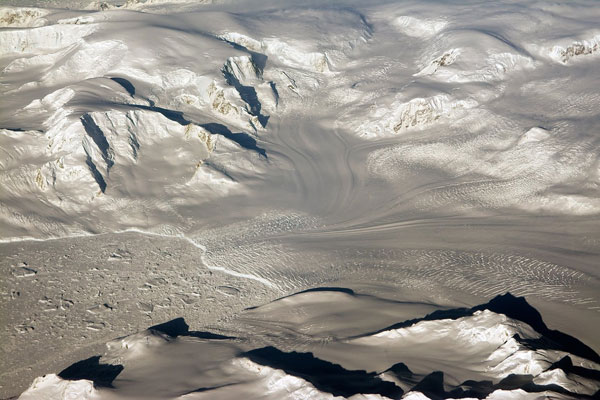For centuries, exploration of the remote Amundsen Sea was an exercise in futility. Too distant. Too cold. Too much ice. The first ship didn’t reach the nearby continental shelf until 1774. Then decades later, in the mid-1800s, one voyage commanded by American William Walker of the Flying Fish was repelled by ice and bad weather. A century after that, a report shows there was even less luck when “persistent sea ice cover, thickened by heavy snowfall,” defeated the U.S. Navy’s Eltanin.
Things, however, are beginning to change — and change faster than anyone anticipated, according to a new study published in the Geophysical Research Letters. Despite its formidable lineage, the Amundsen Sea is widely recognized as the weakest link in the West Antarctic’s splintering chain of ice sheets. But only now is it becoming clear just how fast change is coming.
There, the melting rate tripled in the past decade. Since 1992, the researchers found, the loss rate accelerated by 6.1 gigatons per year. Between 2003 and 2009, that rate nearly tripled to 16.3 gigatons per year. That surge in the melt rate, according to scientists at the University of California at Irvine, means the region, in the past 21 years, shed a Mount Everest-sized amount of ice every two years.
“The mass loss of these glaciers is increasing at an amazing rate,” Isabella Velicogna, the paper’s author, said in a statement. With sea level steadily rising in locations like Miami, connecting the dots back to glacial melt has become a vital endeavor, she added. “It’s critical that we maintain this [observing] network to continue monitoring the changes,” she said. “Because the changes are proceeding very fast.”
Researchers trumpet their finding as an “authoritative estimate of the amount and the rate of loss” of ice. They came to it through several different tools of measurement, including satellites, radar and lasers. “Previous studies had suggested that this region is starting to change very dramatically since the 1990s, and we wanted to see how all the different techniques compared,” lead author Tyler Sutterly said. “The remarkable agreement among the techniques gave us confidence that we are getting this right.”
If there was an exact moment when scientists first began to worry the region was particularly susceptible to ice melt, it came in 1968 — when Ohio State University researcher John Mercer published a paper calling the area a “uniquely vulnerable and unstable body of water.” Other researchers started taking a closer look, and soon a University of Maine scientist wondered if the ice sheet was “disintegrating,” calling out the Amundsen region as “the underbelly of the West Antarctic ice sheet.”
The reason it’s so vulnerable: Ocean currents circulate in substantially warmer water, which thins the “grounding lines” holding glaciers to a sub-sea bed, which keeps them from escaping into the sea. A rupture in that grounding line would unleash a “chain reaction” leading to the collapse of the West Antarctic ice sheet, a NASA release recently said. “[As] ocean heat eats away at the ice, the grounding line retreats inland and ice shelves lose mass. When ice shelves lose mass, they lose the ability to hold back inland glaciers from their march to the sea. … In this equation, more ice flows to sea every year and sea level rises.”
Scientists now have warned there’s no stopping the ice sheet’s collapse. “We feel it is at the point that it is … a chain reaction that’s unstoppable,” a separate University of California Irvine scientist, Eric Rignot, said in May. ” Another researcher added: “That idea that this is unstoppable has been around since the 1970s. We’ve finally hit this point where we have enough observation to put this together.”
At the time of that news, the general consensus was that collapse would take centuries. It’s unclear whether the new synopsis, which shows a much faster melt rate, changes those earlier estimates. “The total ice discharge has increased by 77 percent since 1973,” the study states, calling it a “possible indicator of the development of a marine ice sheet instability in this part of Antarctica.”

